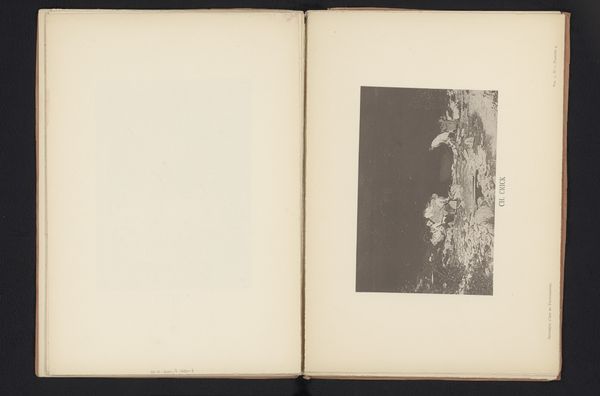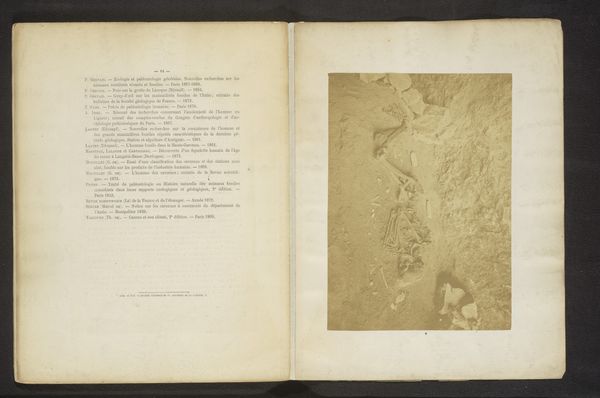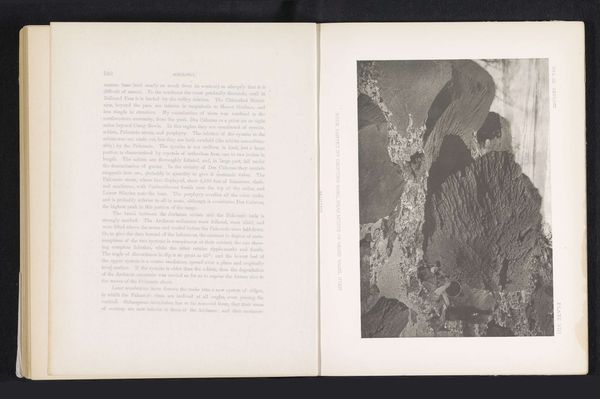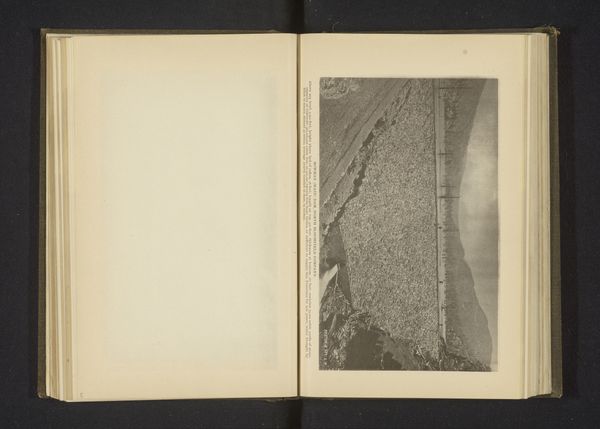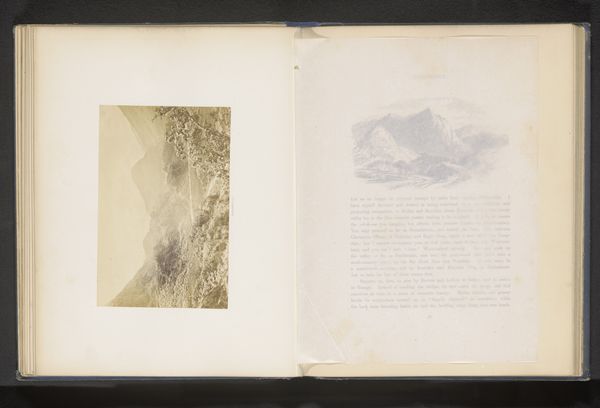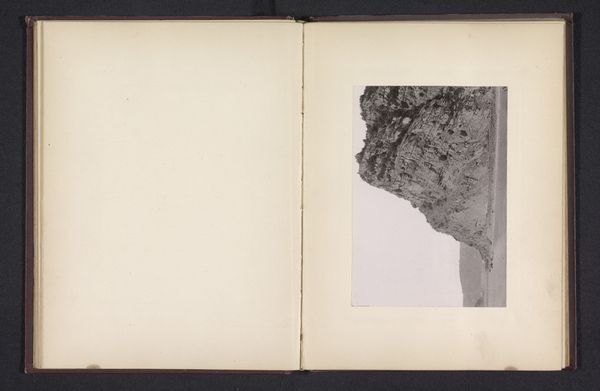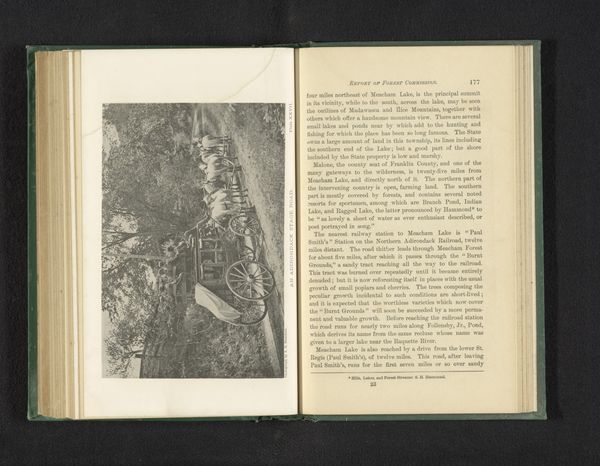
print, photography
#
portrait
# print
#
landscape
#
photography
#
realism
Dimensions: height 128 mm, width 172 mm
Copyright: Rijks Museum: Open Domain
Curator: Before us we have a print titled "Windhond," which translates to Greyhound. Its origins are before 1888. Editor: The composition strikes me immediately. The vertical orientation of the landscape with the dog standing against it is unusual, almost as if the photograph wasn't properly rotated when it was pasted onto the page. There is a strong emphasis on texture too—the fur is meticulously detailed. Curator: Precisely. The work captures a shift in social attitudes towards animals. Greyhound breeding, racing, and hunting with sighthounds were associated with elite circles. Displaying these dogs in art was a way for the bourgeois to claim membership in these aristocratic pastimes. Editor: So it's about cultural aspiration, framed literally through the physicality of the dog itself, even down to the equipment or tack displayed on the dog in this instance? I'm wondering about the photogravure print. Consider the labor to reproduce and disseminate. Was it about access—democratizing these formerly aristocratic visual commodities through reproductive technologies? Curator: Interesting thought. I wonder if the relatively limited circulation of books changed the purpose to which these images were put, and if that’s part of its message. What the patron or printer hoped to achieve. Consider its effect of conveying status in the expanding world of commerce. Editor: True, mass dissemination wasn't quite in full swing yet. There’s also the consideration that the production of prints and photography required a complex division of labor. I bet that the skills of the engravers and printers elevated the subject matter it captured, imbuing it with value and perhaps adding legitimacy to the sitter. Curator: It gives the artwork more significance. Thinking of it more widely, art like this could shape public perceptions of class, status, and the emerging cultural landscape. Editor: It also really underlines the changing economic relations during its making. To go back to materials and methods helps us unpick what might have otherwise been. Curator: Absolutely. It reminds us to see beyond the surface. Editor: Agreed. Thank you.
Comments
No comments
Be the first to comment and join the conversation on the ultimate creative platform.
